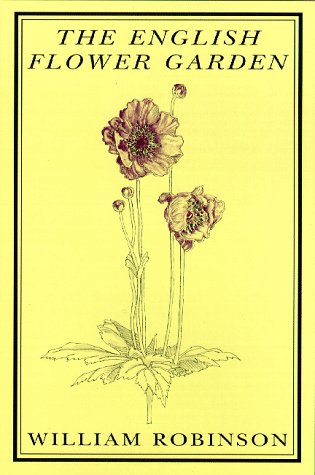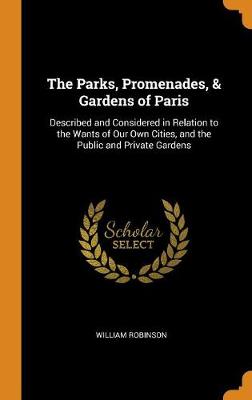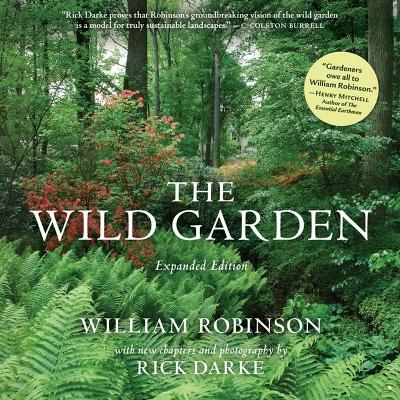Cambridge Library Collection - Botany and Horticulture
5 total works
The innovative gardener and writer William Robinson (1838–1935), several of whose other works are reissued in this series, was sent by The Times as its horticultural correspondent to the Paris International Exposition of 1867. As a result of his visit, he produced two books, The Parks, Promenades and Gardens of Paris (1869) and this highly illustrated work (first published in 1868 and reissued here in its 1869 second edition) on gardening trends in France, describing 'such features of French horticulture as are most worthy of adoption in British gardens'. In comparing French horticulture with British, Robinson believes that the gardens of the great houses of Britain are not matched in France, but that in terms of market gardening and its produce, France is definitely superior. He argues in this interesting work that French methods of training fruit such as apples, pears and peaches should be widely adopted.
Called the best single garden book in our language by Henry Mitchell, this classic includes an encyclopedic listing of the best flowers, trees, and shrubs for the natural garden, illustrated with charming etchings. It presents Robinson's influential ideas on garden design and features. First published in 1883, it went through 15 printings during Robinson's lifetime. This edition represents the definitive 1933 version, with updating by Graham Stuart Thomas to current nomenclature.Published at $35.00 Our last copies available at $17.49
The innovative gardener and writer William Robinson (1838-1935), many of whose other works are reissued in this series, was sent by The Times as its horticultural correspondent to the Paris International Exposition of 1867. As a result of his visit, he produced two books, one on gardening trends in France, and this work of 1869 on the parks and gardens of Paris and its environs (including Versailles), and on the fruit and vegetable farming which fed the famous Parisian food markets such as Les Halles. Robinson admired especially the small planted open spaces, squares and courtyards in Paris, which had no equivalent in London, and which he claimed were 'saving [its inhabitants] from pestilential overcrowding, and making their city something besides a place for all to live out of who can afford it'. This highly illustrated work will interest not only historians of horticulture but also lovers of Paris.
William Robinson's revolutionary book, "The Wild Garden", envisioned an authentically naturalistic approach to gardening that is more vital today than ever before. First published in 1870, "The Wild Garden" evolved through many editions and remained in print through the remainder of the author's lifetime (1838-1935). In the book, Robinson issued a forceful challenge to the prevailing style of the day, which relied upon tender plants arranged in rigidly geometrical designs. In sharp contrast, Robinson advocated for the use of hardy, locally adapted native and exotic plants arranged according to local growing conditions. Robinson's vision was inspired by his first-hand observations of natural habitats in Europe and North America, and he put his ideas into practice in his own garden at Gravetye Manor in West Sussex. "The Wild Garden" was ground-breaking and hugely influential in its day, and is stunningly relevant to twenty-first century gardeners and landscape stewards seeking to adopt sustainable design and management practices.
In addition to the complete original text and illustrations from the fifth edition of 1895, this expanded edition includes new chapters and 112 color photographs by award-winning photographer and landscape consultant Rick Darke. His new material places wild gardening in modern context, underscoring Robinson's importance in the evolution of ecological design and illustrating an inspiring diversity of contemporary wild gardens. The potent combination presented here makes this new edition of a timeless classic an essential resource for all who wish to know how we have arrived at our present understanding of gardens and what opportunities lie ahead. As will be immediately clear to anyone who leafs through this book, Robinson's urgent message continues to resonate.
In addition to the complete original text and illustrations from the fifth edition of 1895, this expanded edition includes new chapters and 112 color photographs by award-winning photographer and landscape consultant Rick Darke. His new material places wild gardening in modern context, underscoring Robinson's importance in the evolution of ecological design and illustrating an inspiring diversity of contemporary wild gardens. The potent combination presented here makes this new edition of a timeless classic an essential resource for all who wish to know how we have arrived at our present understanding of gardens and what opportunities lie ahead. As will be immediately clear to anyone who leafs through this book, Robinson's urgent message continues to resonate.
The Irish-born gardener and writer William Robinson (1838–1935) travelled widely to study gardens and gardening in Europe and America. In 1871 he founded a weekly illustrated periodical, The Garden, which he owned until 1919, and he published numerous books on different aspects of horticulture. Topics included annuals, hardy perennials, alpines and subtropical plants, as well as accounts of his travels. High Victorian garden fashion involved formal beds of exotic and hothouse flowers. Robinson was influential in introducing less formal garden designs, using plants more suited to the English climate. This work was published in 1871, and showed how impressive outdoor displays could be achieved from hardier species, rather than relying on expensive greenhouses for short-lived plants. Robinson's most famous books, The Wild Garden (1870) and The English Flower Garden (1883) are also reissues in this series.




